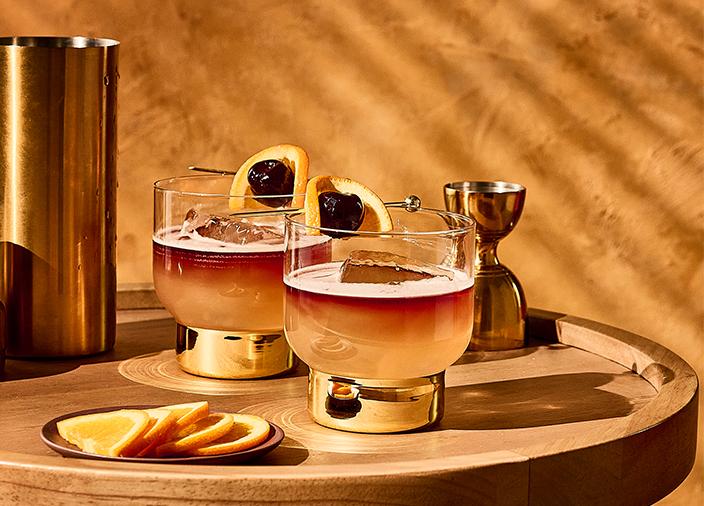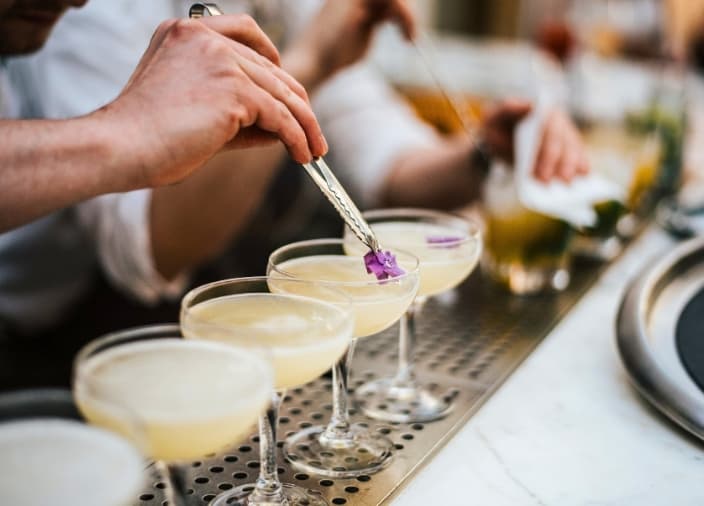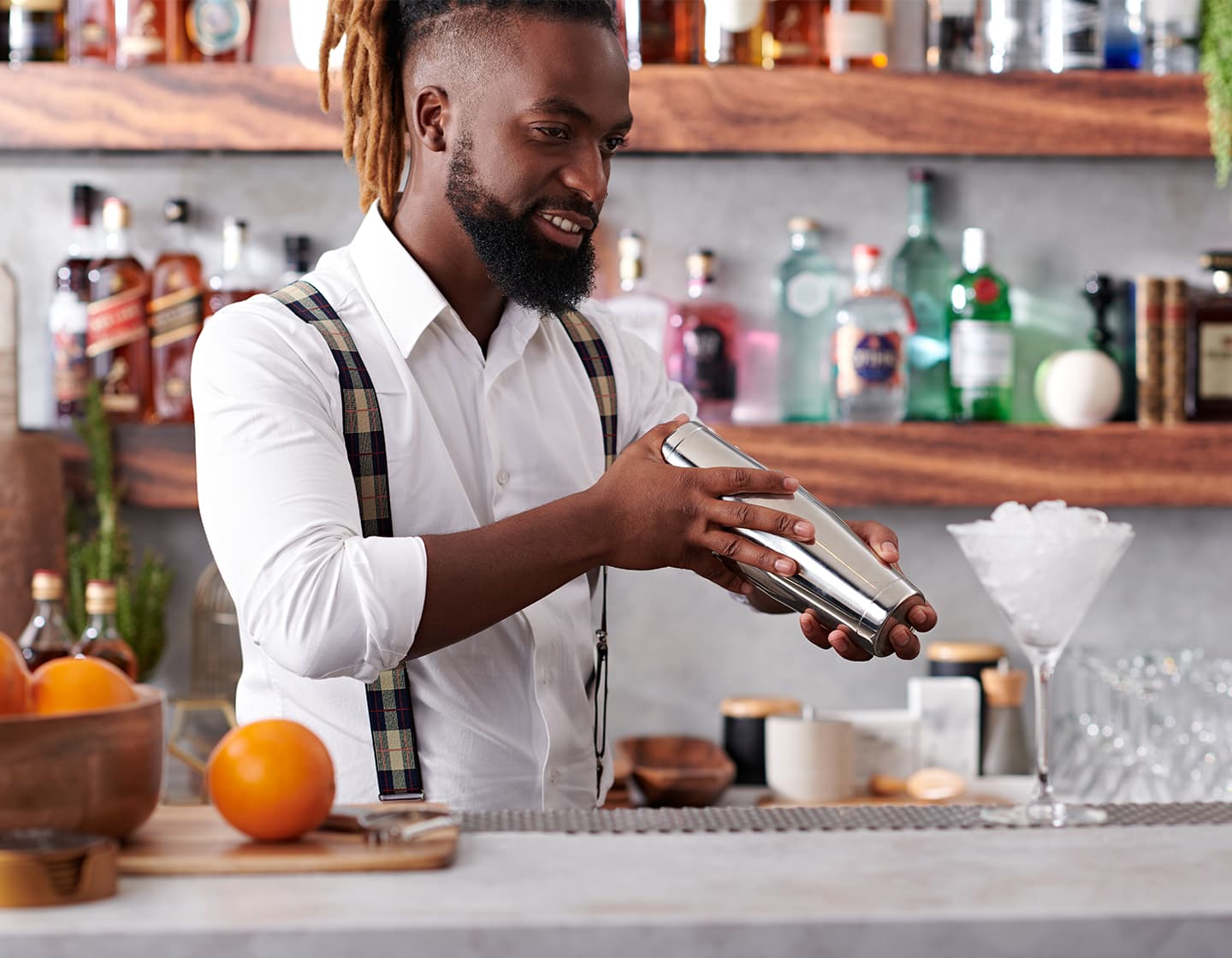Mastering the Art of Cocktail Shaking
Unlock the secrets of perfect cocktail shaking with expert insights, foundational techniques and advanced styles to elevate your cocktail-making game.
Authors: James Fowler, Charles Ainsbury and Ryu Fujii
Estimated reading time: 3 minutes
Mastering your shaking techniques is a great way to add theatre to your cocktail-making – guaranteed to wow your customers and improve the taste and presentation of your cocktails.
Discover our guide to cocktail shaking and perfect your technique with exclusive tips from expert bartenders James Fowler, Charles Ainsbury and Ryu Fujii.

Why is Cocktail Shaking Important?
Cocktail shaking has four purposes:
- Chilling your liquid
- Combining your ingredients
- Diluting the cocktail
- Aerating the mixture
While chilling, diluting and combining can be achieved through stirring, aerating a mixture can only happen when a liquid is shaken. Aeration, or working air into ingredients, gives cocktails a more velvety, consistent texture. It can also reduce bitterness in ingredients and increase sweetness.
Using a Cocktail Shaker
The standard shaking technique is often used for drinks where spirits, juices, cream, fruits, syrups, or other heavy ingredients must be mixed and diluted while simultaneously being chilled and aerated. Find more information on Cocktail Shakers here.
How Long Does it Take to Shake a Cocktail?
There’s no set amount of time needed to shake a cocktail, but a good guide is to shake for a slow count of ten seconds, or until you start to have ice forming on the outside of the shaker.
Top Tip! You can over shake a drink, so be careful! This is especially true with regular bar ice. Try to use larger ice cubes because you can eventually feel the point at which you’ve broken the ice down and are ready to strain. Most drinks will need shaking for less than 15 seconds.

How to use a Cocktail Shaker
- Add ingredients to the cocktail shaker.
- Fill shaker with ice.
- Secure lid and hold shaker in both hands before vigorously shaking in a horizontal motion over your shoulder.
- Shake for a slow count of ten.
- Strain the cocktail into a chilled glass.
Advanced Shaking Techniques
The Double Shake - As explained by Charles Ainsbury
- The double shake is a simple technique to save time.
- You shake and strain two cocktails at once with a shaker in each hand.
- It may seem simple enough, but to master it, you must remember that not all shaken cocktails work the same.
- For example, a Daiquiri needs plenty of ice and a hefty dose of elbow grease, as it's best served very cold. A Tom Collins only needs a few solid flicks of the wrist to combine and chill before it's diluted with soda water.
- Use your dominant hand to perform an effective double shake for a cocktail served straight up.
- With your non-dominant hand, shake a cocktail served on the rocks to maintain the proper texture and level of dilution in each drink.
Top Tip! Every cocktail will need a different shake style so decide what hand to use based on the cocktail you’re shaking. Remember once you add ice, the timer is on.

The Dry Shake and The Reverse Dry Shake
As explained by James Fowler -
- A "dry shake" refers to shaking ingredients in a cocktail shaker without ice.
- Any recipe containing egg requires a vigorous dry shake for at least 30 seconds to ensure that the egg white combines with the other ingredients and produces a smooth, frothy texture.
- After dry shaking, ice is added, and the mixture is shaken for a second time before being strained and served.
- The reverse dry shake is the same technique but in reverse and is used in classic cocktails like a Whisky Sour or Ramos Gin Fizz.
- All ingredients except the egg white are added to a shaker with ice and then strained to remove the ice. The egg white is added before the second shake, producing a more consistent foamy texture.
Top Tip! It’s best to fine-strain the liquid to remove ice shards before the second dry shake.
The Hard Shake
As explained by Ryu Fujii
- The "hard shake" method, invented by Japanese bartender Kazuo Ueda, is a three-point shake, particularly effective with egg or cream-based drinks, that controls how the ice moves inside the shaker and maximises aeration.
- Notably, "the hard shake" does not mean shaking hard but rather using highly stylised, paradoxically gentle, simple Japanese shaking movements.
- The Hard Shake is typically done with a smaller Cobbler Shaker, which allows for a greater degree of control over the direction and movement of the shaker.
Top Tip! It’s best to fine-strain the liquid to remove ice shards before the second dry shake.
Key Takeaways
- Shaking is important for chilling and diluting your liquid, combining ingredients, and aerating the mixture.
- Aside from the standard shake, there are different methods for advanced shaking techniques: the Double Shake, the Dry and the Reverse Dry Shake, and the Hard Shake.
- Improve your shaking stamina by shortening your shake, using lighter tins, shaking with variety, being ambidextrous, stretching, and exercising.
- Smaller ice cubes increase aeration but can risk over-dilution.
By practising and perfecting your shaking method and developing an expert understanding of the best shake style for your creations, you will delight guests and master a fundamental technique that enhances the taste and presentation of your cocktails.
Continue mastering your techniques with free training and resources, and catch the latest news and trends when you sign up as a Diageo Bar Academy member.
